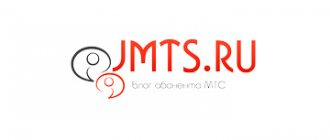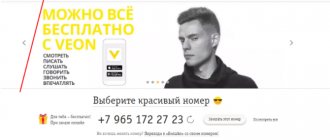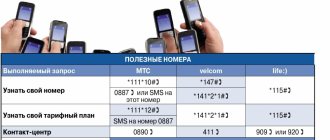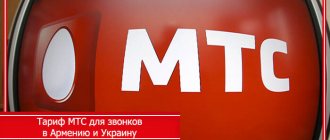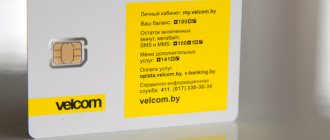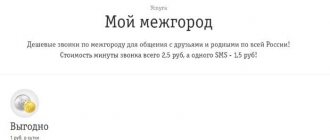With the development of smartphones in the country, various connections and the ability to call another country via wireless communication, dialing rules have also emerged. This is a combination of numbers that allows you to write down a phone number and call a citizen who is outside the Russian Federation. Russians are accustomed to writing down their number using the number eight, but it is impossible to dial through it to a citizen located abroad of Russia.
And when you need to dial a number in another country, many questions arise in your head.
The telephone code of Russia in international format, what does it mean?
Hello, friends! The telephone code in Russia in international format is a code format for telephone numbers that are usually dialed from the number +7. What does it mean? People call this symbol the international communication format, that is, calls outside the country. Sometimes people start dialing with the number 8 if they are calling using the local format.
The fact is that people often leave the country abroad, calling, for example, their relatives and friends in another country. If you call Russia from there, you must use the phone code +7 (000), followed by the number (or another code, for example, 345 when calling to another country from Russia). Using these codes, you can reach the subscriber.
In another case, the number 8 is dialed first and only then the phone number. This number option works within the country. This code is otherwise called a local format code.
Next, we’ll talk about the international phone code, we’ll look at why it needs to be saved in +7 format, and we’ll look at the classification of different codes.
The theory of the appearance of the international number format
The dialing sequence is determined by the telephone numbering plan - a unified system that allows network users to send and receive calls, as well as identify the caller (number identification service is included in all tariff plans of cellular operators).
There are two numbering plans in the world: open and closed. With the first, local calls can be made without a national number (area code), and with the second, that is, closed, you must dial the full international format of the number for any type of call: local, long-distance, international.
Most countries use a closed numbering plan; Moscow has now completely switched to it. Note that the popular term “direct number” appeared before the closed plan was introduced. A “crooked” number, in fact, is not a number with an area code, but one that can be dialed directly without an area/operator code.
We save phone numbers with a code +7, not 8. Why is this important?
Why is it recommended to save the Russian telephone code in international format on the phone starting from 7? There are good reasons for this:
- You can make a call from another country to Russia. Be sure to save the phone number in +7 format. With its help, you can easily call a subscriber in Russia from another country or send him a message.
- Your number will be displayed when calling. If you have not saved the phone number in the international format, it will be displayed when calling another subscriber as unknown. A person can reject your call, and this is not good. Therefore, it is important to save the phone number with the +7 code so that it is visible on the screen when calling.
- There is a problem sending messages. When the phone code is saved, for example, with the code 8 rather than +7, there may be problems when sending a message to another subscriber. Of course, you can dial a phone number starting with eight. That is, use the local code format. But this needs to be done within the country. This way you can make calls and send SMS within Russia.
Types of rooms
Main article: Telephone numbering plan
The 1939 dial features the alphanumeric telephone number LA-2697 in the 2L-4N style. A 2008 photo shows a hair salon in Toronto with an exterior sign displaying the store's phone number in the old format of two letters and five numbers. The keypad of a feature phone contains "*" and "#" The keypad of a Cisco IP phone
Depending on the purpose and accepted numbering plan in the country and the telephone network used, numbers can be divided into different types. These are internal numbers of corporate PBXs, local regional numbers, as well as mobile and specialized numbers (for example, emergency numbers). Local geographic numbers, linked by prefix or code to a locality, are usually called geographic numbers, in the jargon of telephone operators, ABC numbers. Non-geographic numbers in mobile networks (mobile) and specialized national numbers are also called DEF numbers. In the Russian Federation, DEF numbers are also called federal numbers.
External numbers
External numbers
- these are the numbers of user-employees of one organization using one office PBX or UPBX or a separate telephone network of this organization (including the use of several switching devices and in several branches). Typically, internal numbers are short three- or four-digit numbers that make it easier to make calls between employees. Also, large telephone networks of large organizations may use five-, six-, or seven-digit numbering. In Russia, the concept of “departmental communications” has become widespread, where a separate government department uses its own numbering and switches to ensure the operation of such a telephone network.
Since internal numbers are not used on the public telephone network, different organizations may use the same short ranges of subscriber numbers. For example, in many small companies, as a rule, they use the same three-digit numbers like 200-399, 300-399 or 400-499, etc.
If the PBX is connected to the PSTN, the organization is allocated one or more local numbers for a given locality (sometimes also a mobile number within the FMC). Internal numbers of an organization when calling from outside can be dialed manually by an operator (for example, a secretary), or by the calling subscriber himself in automatic tone dialing mode, using special PBX services such as DISA or an auto attendant.
When a PBX subscriber makes a call, as a rule, he must dial a specialized access code to a city or international numbering plan.
Thus, the subscriber’s internal number is hidden behind the local PBX number. Therefore, they say that an internal network subscriber, in addition to the organization’s general number in the PSTN, has an additional or extension number, in English extension
- "extension". The user’s internal number, along with the general number of the organization, is indicated in the contact information (for example, in the contact book, on business cards, in the signature for emails, etc.) through the “additional” note. - additional, “ext.” - additional, “ext.” - internal or “ext.”, as well as through the # symbol.
Examples:
- (+7 ext. 221
- (+7 #221
- +71234567890 ext. 221
Telecom operators also offer organizations a DID service that automatically links the internal numbers of PBX subscribers with one or more external numbers of the public telephone network. This service is used to substitute the correct external number for outgoing calls and to call the user without the need for additional dialing of the internal number.
Public telephone network numbers
Geographic numbers
Geographic local number open plan
- a number within one locality or region (city, village, region), which does not include a city and country code. Such numbers are convenient for residents of the locality, due to the reduction in the length of dialing when calling and greater ease of remembering. In Russia, due to the historical use of open numbering plans, many subscribers within one region exchange easy-to-remember 6- or 7-digit numbers, for example 12-34-56, or 789-00-01[3]. In different regions, such open plan numbers may be repeated. To dial a subscriber from another city or country, you must dial the subscriber's number along with the area code.
Geographic national number open plan
— a unique subscriber number within one country, which must contain the code of the locality or region (that is, linked to the region by code). The convenience of such a number is that it can be communicated to any subscribers from any region or city within one country. The disadvantages are the length, usually 10, 11, 12 or more characters, for example 8-499-123-45-67 (typical 11-digit Moscow number)[3]. In addition, it is possible to change the area code, and therefore the telephone number of the end subscriber, which often happens with the rapid growth of the subscriber base in megacities[4].
Geographic international number of a closed numbering plan
— a telephone number containing, in addition to the end subscriber number and locality code, a country code.
The subscriber's number can be called from any region of the world and is globally unique. Differences in dialing may only be due to the peculiarities of making international calls in different countries. It is in this globally unique form that the International Telecommunication Union recommends organizing telephone number ranges, since it is obvious that this simplifies making international calls. However, multi-digit numbers of more than 12 digits are much more difficult for end users of the public telephone network to remember, which, however, is offset by the widespread use of telephones with built-in phone books, where calling the desired subscriber is carried out by pressing 1-2 keys or even by voice dialing. In accordance with the order of the Ministry of Information and Communications, in 2008 Russia was supposed to completely switch to a closed numbering plan
[5]. However, as of August 20, 2013, the closed numbering plan was introduced only in Moscow.
Non-geographic telephone numbers
— dedicated ranges of national numbers not related to territorial division. They are used to identify the terminal elements of telephone communication networks in mobile radiotelephone (or cellular) networks, mobile radio communications, mobile satellite radio communications, and also as access codes for additional telecommunication services. Examples of numbers[3]:
- 8-903-123-45-67 - one of the numbers of a cellular subscriber in the Russian Federation[3]
- 8-800-123-45-67 - one of the numbers in Russia, the call to which is paid for by the called subscriber (free for the caller)[3]
Often, specialized numbers are only available within the country where they were assigned.
- +979 ... - International premium rate service - international dialing code for various premium services with access for an additional fee.
Emergency numbers
— telephone numbers for urgent assistance. The most well-known emergency telephone number is 112 (GSM standard), as well as 911 (in the USA, Canada and other countries). In Russia, as well as in many other countries, the following emergency numbers are common, routing calls from subscribers to the nearest representative of the corresponding service:
- 01 or 101 - fire department
- 02 or 102 - police
- 03 or 103 - ambulance
- 04 or 104 - gas service
On February 1, 2013, the President of the Russian Federation signed Federal Law of the Russian Federation No. 9-FZ, establishing the number “112” as a single number for calling emergency services for receiving messages about fires and emergencies in Russia in local telephone networks, as well as in many countries peace[6].
Classifier of telephone codes of countries of the world, where to look
Where can I look up telephone codes for different countries around the world? Let's use a special service that has all the tools to find them.
So, follow the link “online-sms.rf/tools/verification-numbers” (Screen 1).
Next, write your number with the telephone code that the service offers and click the “Check” button.
After verification, information about the number will be shown - for example, phone number, country code, network (telecom operator).
At the same time, the site presents all the codes of the online world “sms.rf/tools/international-country-codes”. You can use them for phone numbers to make international calls.
What is a prefix?
A prefix is the operator code that comes immediately after 8 or +7. It is also used by subscribers to identify the operator in order to understand how expedient it is to call back a missed call and how much it will cost. Communication within the network occurs on preferential terms, so it is useful to clarify this information in advance.
The operator is found by three numbers; there are applications, websites for this, and some offer instant USSD commands to use the service for free. On thematic portals, the full number of the caller is entered, after which information about the region and operator is displayed. If you don’t want to waste traffic on this, you can download the Excel database, which indicates foreign and Russian formats.
When you need to find out the prefix for a call, the information is clarified with the operator or also searched on the Internet. Websites do not always provide reliable data, so it is safer to call the hotline.
We save phone numbers with the country code of the country where you live
Now, you can save phone numbers with the code of the country in which you live. To do this, dial the country code on your phone - for example, +7. Next, the number is 9373455678. Then, click the “Add contacts” button. They are called differently on phones.
Write the name of the contact and save with the “Create contact” button. You can dial this number without dialing, because it will be saved on the phone.
This is how the local telephone number format and the international format are preserved.
Notes
- “...Report: Moscow, phone G 0-48-64”
- Decree of the Government of the Russian Federation of September 26, 1997 No. 1235 “On approval of the Rules for the provision of telephone services”, I, clause 3.
- ↑ 12345
The numbers are randomly selected for illustrative purposes only! ATTENTION! Do not call the numbers listed to check their existence and operation! - News on the REGNUM news agency website “Changing telephone numbers in Moscow” dated February 25, 2007
- Order of the Ministry of Information and Communications No. 142 of November 17, 2006
- Amendments have been made to the law on the protection of the population and territories from natural and man-made emergencies
- Memorial book of the Moscow province for 1909
- Newspaper "Gudok" dated January 16, 1927
- Alexandrov V.A.
On the first page the telephone number of the printing house is indicated: 1-11-40 // What you need to know to spend less on electricity. - 3rd. - Moscow, Arbat: Printing house of V. Zelimov, 1912. - P. 1. - 96 p. - Education Network Directory, 1960s.
- Phone number instead of login - Passport. Help (Russian). yandex.ru. Date accessed: December 26, 2021.
What is the correct phone number format
Until yesterday, I had my landline phone number in the following format on eBay in the following format (495)1234567. As you can see, the region is Moscow. But yesterday, when I went to eBay, this same eBay asked me to confirm or correct my phone number. I thought that this spelling was incorrect and corrected it to the following number: 7104951234567.
Today I go to eBay, and he again asks me to confirm my phone and says that a call will be made to me and they will tell me some kind of control code. I left the number unchanged 7104951234567. A second later I immediately received a notification on the same page in eBay that the number was incorrect. But it still lets me into my account for now.
I'm afraid that if I don't solve the problem with the correct spelling of my landline phone number, within a couple of times eBay will block me from logging into my account. Question: How should a landline phone number be entered correctly? Or maybe enter a mobile phone number? What do you recommend, friends?
